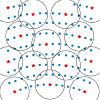Assessing the influence of indoor mapping sources for indoor spatial analysis of physical distancing
DOI:
https://doi.org/10.5311/JOSIS.2023.27.296Keywords:
spatial optimization, indoor GIS, uncertaintyAbstract
GIScience and spatial information contributions to indoor mapping and navigation are many, but there remain significant challenges. Indoor environments are where people spend most of their time, socializing, working, learning, exercising, etc. During times of emergencies, disease outbreaks, and crises, indoor management and planning must be prepared to handle such events, yet doing so is often hindered by a lack of supporting spatial information and appropriate analytics. This paper focuses on COVID-19 mitigation measures to reduce disease transmission through physical distancing in indoor spaces, such as classrooms, offices, dining commons, restaurants, and entertainment venues. Geographical data to support indoor environments is discussed, particularly issues of acquisition, spatial data uncertainty, and implications for spatial analytics. Planning for classroom physical distancing on a university campus highlights capabilities, issues, and challenges, with a comparison made between previous studies relying on architectural data and more precise information obtained using LiDAR.

Downloads
Published
Issue
Section
License
Copyright (c) 2023 Alan Murray, Jiwon Baik, Hannah Malak

This work is licensed under a Creative Commons Attribution 3.0 Unported License.
Articles in JOSIS are licensed under a Creative Commons Attribution 3.0 License.
